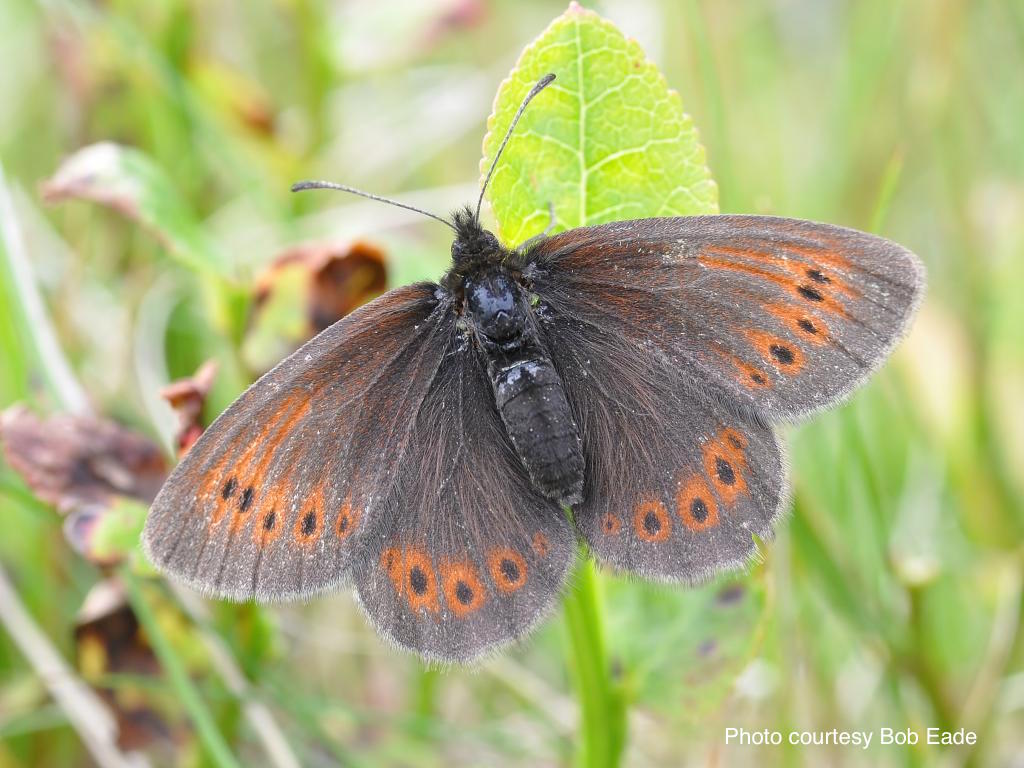Could you please help, if possible, with the following survey of the Mountain Ringlet Butterfly? The following are details of the butterfly and survey by Dr Rosa Menendez of Lancaster University together with 1km grid squares to be survey and a photograph of the butterfly.
MOUNTAIN RINGLET BUTTERFLY: Ecology, distribution and conservation
Why is the Mountain Ringlet Butterfly important:
The Mountain Ringlet is the UK’s only Montane butterfly and lives in the Cumbrian Mountains, the Grampians and a few other spots in Scotland. It is one of the most endangered butterflies in the UK having seen a 60% decline since the 1970s and is potentially most threatened by climate change. It’s flight period as an adult butterfly is just a few weeks in July.
What is the project:
There is a project being run by Dr Rosa Menendez, Senior Lecturer at Lancaster University looking at where the butterflies are found. They have made a model based on temperature, rainful, geology giving grid squares as to where the butterflies would be expected to be found. They wish to test whether the model is accurate and are asking for help in measuring butterfly numbers on the high fells NOW, for the next few weeks!
How to identify the Mountain Ringlet:
There are not many other possible butterflies at that elevation. See attached ID chart in PDF:
Mountain Ringlet: Brown with some orange spots on back of the wings. 35mm wingspan. Flies close to the ground.
Small Heath: may be at same altitude but smaller and yellowy colour.
Less likely to be seen at altitude:
Ringlet: dark brown, no orange
Meadow Brown: just one eye spot on fore(front)wing. Larger 4cm + wingspan
Other butterflies may be “hill topping” or passing through such as Red Admirals or Painted Ladies but these have a very different colour scheme, are not Brown with orange dots and so will not be confused with Mountain Ringlet.
What to do:
It would be fantastic if BMC members or others could incorporate a look for the Mountain Ringlet into hill walks in to the fells over the next 2-3 weeks (until end of July but peak period will be first 2 weeks of July). This should be a sunny day as the butterfly only flies when the sun is out. It lives between 500 and 800m. It likes areas of Mat Grass, or areas that are slightly wet with rushes, possibly in a depression with slight shelter. Any orientation of slope (N,S,W,E). Chose a grid square (or two) from the map in PDF and table attached and try and cover as much of it (in safety) as you can! Clearly safety is of paramount importance so keep away from cliffs/steep drops
- 1. Record 6 figure grid ref.
- 2. Record numbers of Mountain Ringlet butterflies: may be individuals but can be upto 50 in a colony!
- 3. Takes photo if you can. Phones can take excellent butterfly photos!
- 4. Submit records to: https://www.cumbria-butterflies.org.uk/sightings
- 5. If you record no sightings this is also useful: please inform ‘nil records’ to project lead Rosa Menendez:r.menendez@lancaster.ac.ukMountain ringlet 1km squares to survey in 2021
Grid 1km to survey
NY2208 NY2810
NY2107 NY4310
NY2207 NY3611
NY2211 NY2914
NY2309 NY3413
NY2110 NY4609
NY3415 NY3518
NY2912 NY3710
NY3515 NY2106
NY2310 NY4411
NY2511 NY2011
NY2911 NY3511
NY2505 NY3420
NY3414 NY2908
NY3012 NY4510
NY1611 NY4309
NY2506 NY2909
NY1511 NY2314
NY3316 NY1714
NY3315 NY3713
NY3418Many thanks!
Steve Charles
(BMC NW area Volunteer Hill walking rep and Butterfly Conservation UK Volunteer)
Any queries to: stevecharles25@gmail.com or Dr Menendez
